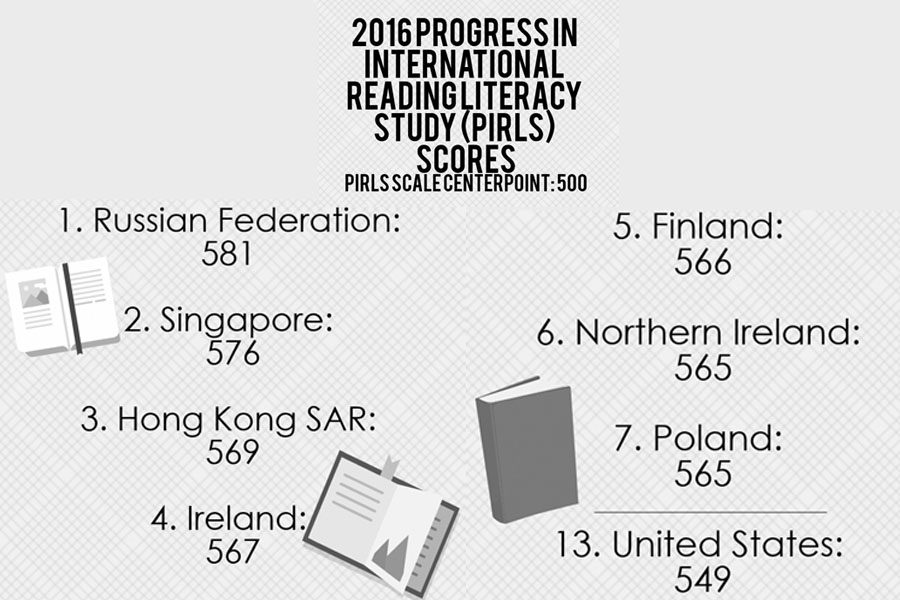US Schools Reading Scores Drop
February 22, 2018
In data released by the National Center for Education Statistics (NCES), the U.S. rank dropped from fifth in 2011 to 13th in 2016 in the Progress in International Reading Literacy Study, (PIRLS,) an exam meant to measure reading ability. PIRLS is described on the NCES website as “an international assessment of student performance in reading literacy at the fourth grade” which includes 61 participating countries.
The PIRLS first took place in 2001 and are organized by the International Association for the Evaluation of Educational Achievement (IEA). The test is given every five years, with 2016 being the fourth study reported.
Only 16 percent of U.S. students taking the test reached an advanced score of 625, as compared to Singapore’s 29 percent.
With such a diverse population in the U.S., and particularly in MCPS, the ranking may be evidence of the importance of closing the growing achievement gap, affecting how curriculum is created and students are taught.
Only 16 percent of U.S. students taking the test reached an advanced score of 625, as compared to Singapore’s 29 percent.
“Our curriculum aims to challenge students in their thinking abilities; however, when students don’t come with the same background knowledge and vocabulary – this impacts their ability to grasp and understand texts,” said Rebecca McNiece, a fourth grade teacher at Rock Creek ES.
McNiece said she is spending more time building those skills. Without those basic skills, students have trouble understanding deeper concepts.
“As a teacher, I now have to spend time building this basic background knowledge which allows for less time to be spent focused on the deeper meanings within the text,” she said.
McNiece is able to do this by showing her students pictures, discussing new words they have learned orally and playing games.
The reading ability of U.S. fourth graders could potentially later affect high school students.
“If we are trying to generally increase student performance, there are things we need to change and what that is and what the steps are is something we need to talk about,” English teacher Sean Pang said.
Why the U.S. ranking continues to fall behind other countries is a matter of debate. Students have expressed concern that high school students in the U.S. are not being held to as high standards as other students around the world.
In the Program for International Student Assessment taken by 15 year olds in 2015, the average scores of students in the United States was 497. This is compared to the highest ranking countries, Singapore at 535 and Hong Kong at 527.
“I feel we prioritize children’s well being over children’s academic achievements. The fact is that a child is not here [at school] to have fun,” junior Leo Wagner said. “Children in other countries are often years ahead of American children by the time they exit high school or the equivalent educational level in another country.”




